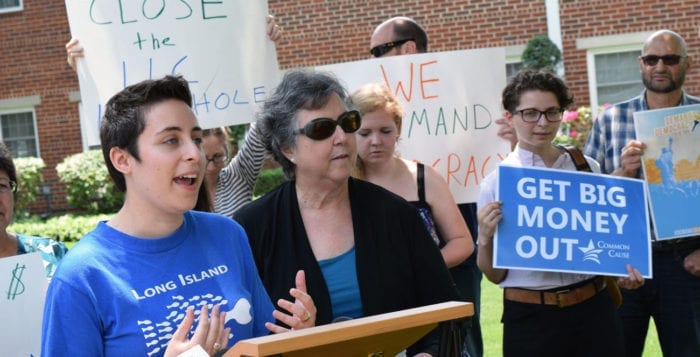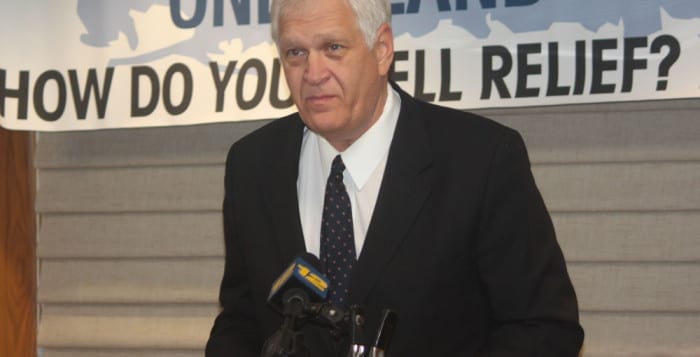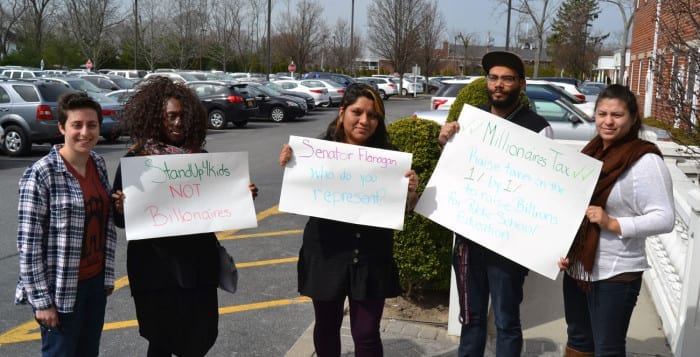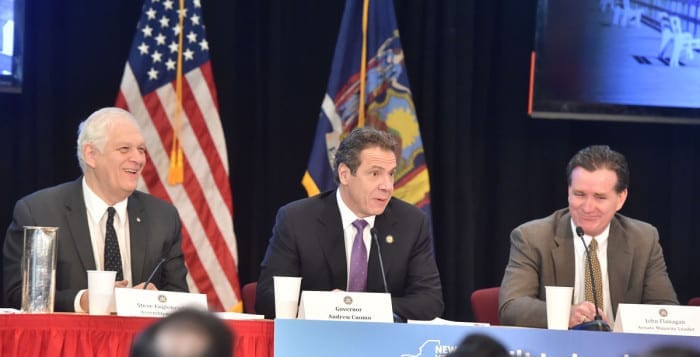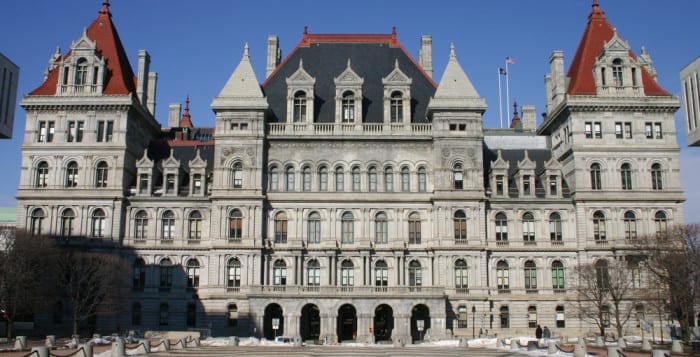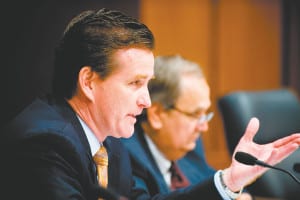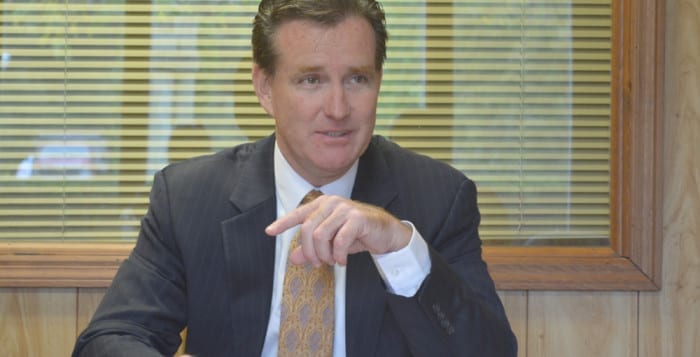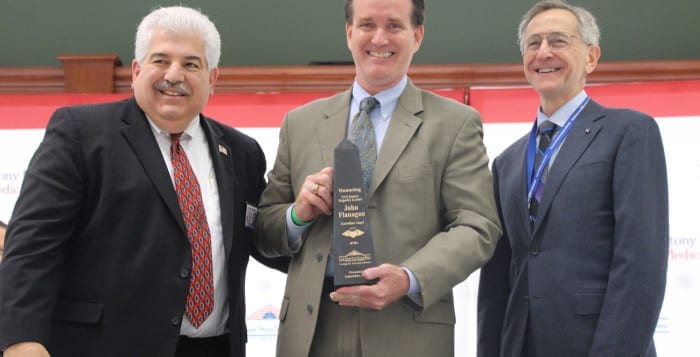Time is running out for the state Legislature to change the way it allows money to influence politics, and Long Island activists took to the Senate majority leader’s Smithtown office on Tuesday to make some noise.
A loophole in the state’s campaign finance laws has become a political talking point for the better part of the past year, allowing limited liability companies to contribute large sums of cash to political campaigns and committees in amounts far greater than the average corporation can. On Tuesday, groups including Common Cause/NY and Moveon.org took to state Sen. John Flanagan’s (R-East Northport) office to draw attention to legislation that was written to change that, with hopes of swaying a vote on the Senate floor before session ends June 16.
Susan Lerner, executive director of Common Cause/NY said her group, which investigates public officials and political contributions, found the state Senate Republican Campaign Committee was one of the largest benefactors of what has been dubbed the LLC loophole, bringing in about $5.6 million in campaign contributions from LLCs over the past 10 years — with 68 percent of which coming from the real estate industry. The Senate Housekeeping Committee also netted more than $11 million over the past 10 years in the same fashion.
Lerner argued that as long as elected leaders are receiving such lump sums of money from politically motivated groups, they will never allow for legislation to come to a full vote enacting any kind of change.
“It’s time for the Senate Republicans to stop blocking the necessary reforms,” she said. “The LLC loophole has a warping affect on public policy.”
Flanagan, who the Long Island advocates singled out on Tuesday as one of the benefactors of LLC contributions to the tune of $159,000 over the past 10 years, referred to the legislation as a “red herring that fails to fundamentally address the root cause” of the campaign finance flaws. He said the state needed to be more aggressive in beefing up money laundering laws and targeting straw donors to keep groups from contributing in the shadows.
“If we are going to achieve real campaign finance reform and target corruption, you can’t close one loophole and declare the job done. In fact, one needs to look no further than New York City for evidence of multiple campaign finance transgressions that must be addressed,” Flanagan said. “We need to take additional steps to prevent the funneling of big money through county organizations and directing where that money will be spent, which is already illegal under state law.”
Senate bill S60B has been sitting in the Senate’s Codes Committee since May 9. The bill, which state Sen. Daniel Squadron (D- Brooklyn) introduced, saw success in the Democrat-controlled Assembly in the past before previous versions died in the Senate. In the legislation, Squadron argued that the Legislature must avoid such loopholes that allow “unlimited sums of anonymous dollars to undermine the entire political process.”
Lisa Oldendorp, of Moveon.org’s Long Island chapter, said the political loophole was a threat to democracy in the United States.
“We are sick and tired of the role that money plays in campaigns,” she said. “It’s way beyond time to pass this law. We want the voice of the people to be heard.”
Alejandra Sorta, organizer of the Long Island Civic Engagement Table, which works with working class communities of color to turn the tide of anti-immigrant and anti-worker politics, said the timing was right for such legislation to pass, citing various corruption scandals sprouting up across various local and state governments, which has taken down some major political players.
“In light of persistent corruption charges, indictments and/or convictions stemming from unethical and illegal activity at the hands of some of our most powerful and influential leaders in Albany, communities of color are raising their voices and speaking out against big money in politics,” she said. “We demand concrete electoral reforms that will assure transparency and accountability at every level of government.”

